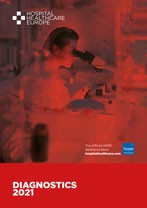The use of whole genomic sequencing has been shown to increase the diagnostic yield by a third in patients with suspected mitochondrial disorders.
The use of whole genomic sequencing was found to enable a definite or probably genetic diagnosis in 31% of patients with suspected mitochondrial disorders according to a study published in the BMJ.1 Mitochondria are the fundamental cellular energy system in cells and disorders of the mitochondrial system can affect several organ systems that use a large amount of energy including the brain, nerves and muscles.2 In fact, evidence suggests that such disorders are estimated to affect around 1 in 4300 adults.3 Mitochondria have their own DNA (mtDNA) although the majority of proteins which make up the structure of mitochondria are created in the nucleus (nDNA). A mitochondrial disorder can be defined as any disorder which affects the structure of function of the mitochondria and can arise from mutations in either mtDNA or from within the nuclear genome.
Current methods for diagnosing mitochondrial diseases rely on biochemical screening of blood, urine or cerebrospinal fluid, followed by next generation sequencing of mtDNA and nDNA.4 While sequencing the protein coding regions of all genes (or exome sequencing) can be effective at identifying mitochondrial genetic diagnoses, this approach fails to identify 40% of cases.5
For the present study, a team from Department of Clinical Neurosciences, University of Cambridge, Cambridge, UK, set out to determine whether whole genomic sequencing could define the molecular basis of suspected mitochondrial disorders. Using the 100,000 Genomes project, the team recruited patients referred for further testing and with a suspected multi-system, progressive disorder involving the central nervous system, the neuromuscular system or both. DNA samples were extracted from a blood sample and sequenced.
Findings
A total of 345 individuals with a median age of 25 (54% female) from 319 different families were included and had their whole genome sequenced. The researchers identified a definite or probable genetic diagnosis in 31% (98/319) of families. The team made a definite genetic diagnosis in 28% of families which included 14 diagnoses (4% of the 319) that provided only a partial explanation of their clinical symptoms. In total, 95 different genes were implicated and interestingly, of the 104 families given a diagnosis, only 38% were in genes known to cause a primary mitochondrial disease (6 mtDNA and 30 nDNA). The remaining 63% had a genetic diagnosis based on non-mitochondrial genes.
The authors commented on how the use of whole genome sequencing as a first-line approach to genetic testing has not been fully explored and felt that around 90% of mitochondrial disorders could be detected using this approach. They suggested that whole genome sequencing is a useful diagnostic test for those with mitochondrial diseases and which should be offered early in the diagnostic patient pathway.
References
- Schon KR et al. Use of whole genome sequencing to determine genetic basis of suspected mitochondrial disorders: cohort study. BMJ 2021;375: e066288
- McFarland R et al. A neurological perspective on mitochondrial disease. Lancet Neurol 2010;8:829–40.
- Gorman GS et al. Prevalence of nuclear and mitochondrial DNA mutations related to adult mitochondrial disease. Ann Neurol 2015;77:753–9.
- Parikh S et al. Diagnosis of ‘possible’ mitochondrial disease: an existential crisis. J Med Genet 2019;56(3):123–30.
- Taylor RW et al. Use of whole-exome sequencing to determine the genetic basis of multiple mitochondrial respiratory chain complex deficiencies. JAMA 2014;312(1):68–77.





